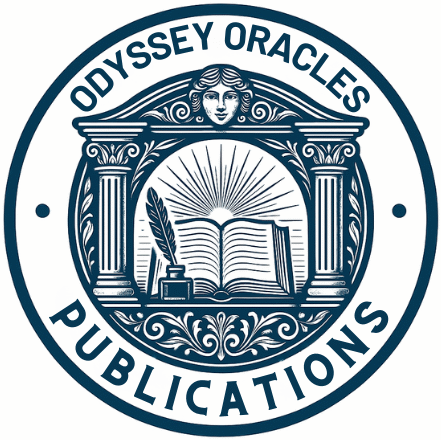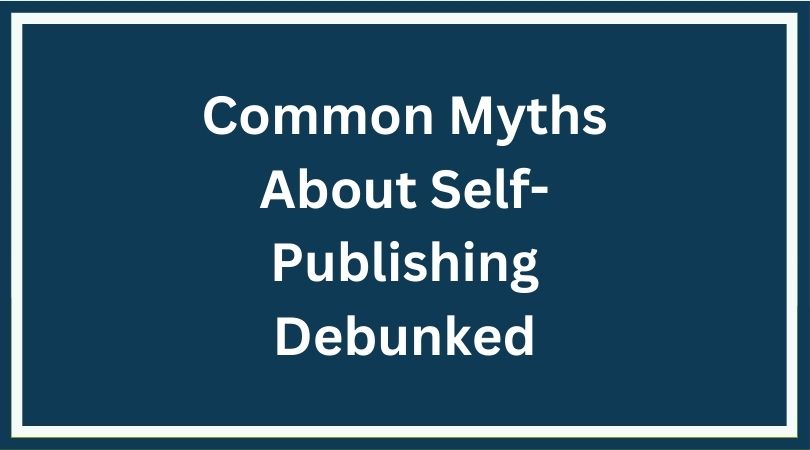Self-Publishing Vs Traditional Publishing: Pros And Cons

Understanding the Basics: Self-Publishing vs Traditional Publishing
Self-publishing and traditional publishing are two terms thrown around much in the literary world. But what exactly do they mean? Self-publishing is where you, the author, hold all the strings. You’re the boss, deciding everything from formatting to cover design. It’s your baby from start to finish.
Traditional publishing, on the other hand, has a more classic approach. This means working with established publishing houses that take the reins on editing, design, and distribution once they accept your manuscript. You’ve got a team behind you, guiding the process and utilizing their resources to push your book into the world.
Where do these two fit today? With the rise of digital technology, both self-publishing and traditional publishing have carved out spaces in the market. Self-publishing is booming, thanks to platforms that make it easy to get your work to readers without needing a big-name publisher. However, traditional publishing still holds its ground, offering structured support and often greater credibility in the eyes of the media and readers.
If you’re considering jumping into the publishing pool, it’s crucial to understand these basics. Each path has its unique setup, and knowing how they operate in today’s world can massively impact your journey. Whether you’re a hands-on entrepreneur or someone who prefers the security of an established industry giant, understanding the groundwork helps you steer your ship more confidently.
Access and Opportunity: Who Can Publish?
Ever wonder how easy it is to get your book out there for the world to see? The hurdles to publishing used to be as high as Everest, but that’s not the case anymore. Self-publishing has flipped the traditional barriers upside down. Got a story? With self-publishing, just about anyone can share their creations with the click of a button. Platforms have streamlined the process, making it pretty straightforward for budding authors.
Traditional publishing, though, isn’t as open. Due to rigorous selection processes, getting through can feel like breaking into Fort Knox. Publishers cherry-pick manuscripts they believe are most marketable, creating a tough nut to crack for new voices unless you’ve got an agent pushing your work.
Both have their pluses in terms of reach. Self-publishing lets you test new waters, targeting niche audiences without needing to cater to mainstream tastes initially. The marketplace is hungry for diverse voices and perspectives, making it a playground for creative experimentation. Conversely, traditional publishers often have established connections and distribution channels to help you tap into a broader, sometimes more global audience.
So, who shines where? If you’re seeking quick entry and niche engagement, self-publishing is your ticket. But if you’re gunning for widespread reach with support from a seasoned squad, traditional might be worth the wait (and patience!). It’s all about picking a path that best suits your goals and resources.
When considering your options, ask yourself: Do I want full control now, or am I willing to wait for a potentially larger platform later? Finding clarity in your aspirations will guide your journey in the maze of publishing.
Creative Control and Artistic Freedom
Ever get tired of others calling the shots, especially when it’s your creation at stake? That’s where self-publishing steps in like a breath of fresh air. You hold the creative reins, designing every detail from the book’s cover to the very last sentence. It’s your vision, unfiltered and pure, right in the hands of your readers.
Traditional publishing, though well-respected, tends to have more cooks in the kitchen. Editors, designers, and marketing teams all have their say, often reshaping your original vision to fit market trends or house standards. Sometimes this means a polish—other times, a complete makeover!
How do you feel about compromise? Self-publishing allows you to stay true to your voice and message, taking risks that might scare traditional gatekeepers. If you have an unconventional format or edgy content, self-publishing gives it wings without needing sign-offs.
However, remember that traditional publishers bring expertise and polish that can enhance your work in ways you might not have imagined. They can refine your piece for better readability and broader appeal, sometimes boosting your career with skills you didn’t know you needed.
Think about your comfort level with sharing control. Are you confident in juggling multiple roles, or do you value expert input to refine your work? Knowing your stance here can hugely steer your publishing ship.
Financial Considerations: Investment and Royalties
Money talks, especially in publishing. When it comes to self-publishing, you’re both the bank and the spender. You’ll handle all upfront costs, from cover design to marketing expenses. The perk? A bigger slice of the royalty pie. Generally, you keep more from each sale because you’re not splitting it with a publishing house.
In traditional publishing, the house usually foots the bill for getting your book from manuscript to market. They invest in design, distribution, and marketing, meaning less financial stress on your end. The trade-off? Smaller royalties. Since the publisher takes a cut, you might see a smaller payday per book sold.
Considering risks, your personal investment might not pay off in self-publishing if the book doesn’t sell well. It’s a risk-reward scenario. Traditional publishing mitigates some risk by shouldering financial duties, but with potential impacts on your take-home earnings.
It’s vital to weigh the immediate financial layout against long-term earning potential. Are you willing to front costs for bigger returns later, or do you prefer to share earnings for immediate support and less financial stress? Understanding your financial comfort zone can shape a rewarding publishing journey.
Marketing and Distribution: Reaching Your Audience
In self-publishing, wearing many hats is part of the deal. This includes crafting your own marketing plan. You’re hustling to get the word out across social media, blogs, and book fairs. The freedom means you tailor campaigns to fit your audience, but it also means you’re on the hook for all the legwork.
Traditional publishing often comes with built-in marketing muscle. It has the resources and networks to launch strategic campaigns, placing your book in all the right places. Publicity teams work to get your book spotlighted in bookstores, libraries, and media outlets, reaching more readers without you having to do the hard sell.
Distribution is another area where both paths diverge. As a self-publisher, you navigate online platforms like Amazon, CreateSpace, or Kindle Direct Publishing, tapping into local booksellers if you’re savvy. It’s an exciting mix of challenge and opportunity, but expanding reach requires persistent effort.
With traditional publishers, your book benefits from established distribution channels that get it into physical stores and online retailers around the globe. This means greater visibility, an advantage if your goal is widespread recognition.
Consider your strengths. Are you a natural promoter, ready to roll up your sleeves for your book baby? Or do you prefer letting seasoned experts boost your book’s profile while you focus solely on writing? Aligning your choice with your skills can ensure your efforts find the right readers.
Timelines and Scheduling: The Road to Publication
The path to seeing your book in print can vary dramatically between self-publishing and traditional publishing. Self-publishing offers a swift journey. Once you’ve dotted all the i’s and crossed the t’s with editing and design, you can publish almost immediately. This freedom lets you react quickly to market trends or personal deadlines.
Traditional publishing often demands patience. The process takes time—querying agents, navigating editorial revisions, and waiting in line for scheduled releases. It could be months, sometimes years, before your book hits the shelves. The timeline is structured, but the reward often lies in the thoroughness and polish it provides.
Flexibility is a key perk of self-publishing. Want to release a book in time for a specific event or season? It’s all up to you. Conversely, traditional publishers have set schedules, aligning releases with peak times that optimize market visibility. Their experience guides when your book should make its debut for maximum impact.
Managing your book project’s timeline requires clear planning. Are you ready to embrace the hustle, controlling each step of your book’s rollout? Or do you prefer the assurance of a methodical schedule guided by experienced hands? Your personal timeline and patience level can be a significant part of the decision-making puzzle.
Credibility, Reputation, and Brand Building
Building your reputation as an author is more than just selling books; it’s about creating a lasting impression. Self-publishing offers a dynamic start, where you control your brand image from the get-go. You decide how you’re presented to the world and what your brand stands for. However, breaking through to popular media or gaining critical acclaim can be a challenge without the backing of a recognized publisher.
With traditional publishing, credibility often comes bundled in the package. Publishers bring a stamp of approval that can enhance your reputation instantly. Their established name lends credibility, making it easier to engage with literary critics and larger media outlets. For debut authors, this can translate into instant brand recognition.
Self-publishing shines with the rise of social media and direct engagement platforms. You can personally connect with readers, host events, and grow your audience more organically. It’s a chance to build an authentic and personable brand, one that reflects your voice and values directly.
Brand perception varies between the two paths. Traditionally published authors often enjoy an enhanced prestige, leveraging the authority of their publishers. Yet, in the self-publishing world, the stigma is fading fast as more success stories emerge, proving that quality and independent publishing can go hand in hand.
Think about where your priorities lie. Are you looking for immediate credibility through established channels, or do you embrace the challenge of building a brand from the ground up? Recognizing your brand-building goals can help you choose the publishing path that aligns with your long-term career ambitions.
Making the Choice: Which Path is Right for You?
Deciding between self-publishing and traditional publishing isn’t just about picking a path; it’s about aligning with what suits you best. Each route offers unique experiences and opportunities, but they cater to different kinds of authors and goals.
Consider what truly matters most to you. Is it creative control, perhaps? Or maybe you value the prestige that comes with a traditional publisher. Weigh the financial aspects, too — whether you’re prepared to invest upfront or prefer the supported structure of traditional royalties.
Think about how much time and effort you’re ready to pour into marketing. Self-publishing might mean more work on your plate, but it also gives you full rein over your promotion strategies. Traditional paths offer less immediate burden but come with their own limitations.
Your personal circumstances play a huge role in your decision. Are you ready for a fast-paced, flexible ride, or do you prefer the stability of a scheduled plan with a team to back you up? Consider these factors and how they fit into your life and writing aspirations.
At the end of the day, both paths have produced many celebrated authors. Whether your pride lies in every aspect of your book’s creation or in seeing your hard work pass through industry benchmarks, your choice will shape your journey and success in the literary world. Remember, it’s your story to tell, so choose the journey that resonates with you.






